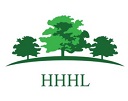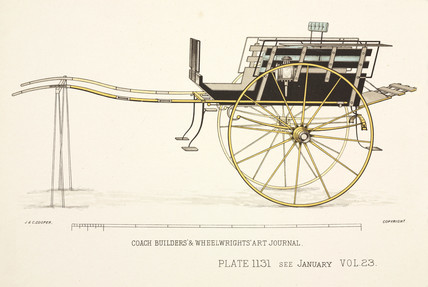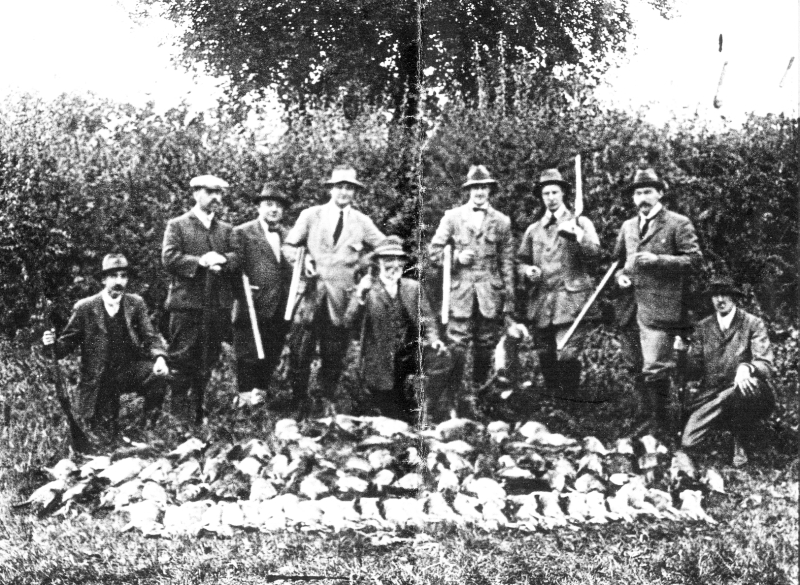



Whilst the existence of High Lodge farm can be inferred from earlier advertisements, the first explicit mention of the farmhouse is in the Bury and Norwich Post of 8th February 1809:
To be let for a term of years and entered upon at Lady Day next, a farm in Santon Downham called the High Lodge, now in the occupation of Mrs Tyrrell Garner, consisting of a comfortable dwelling-house, a garden wait'd in, a good barn, stable. granary and outhouses and about 1200 acres of land, which have hitherto been used as a warren.
The stock of rabbits and crops of corn to be taken by the tenant at a fair valuation.
To be shown by Mr Webb at the Post Office, Brandon who will answer queries.
Ten years later, the Cambridge Chronicle and Journal of 22nd October 1819 carried the following advertisement:
Suffolk
A Capital Tithe-free Farm
Situation in Santon Downham To be let and entered upon at Lady-day next, Twelve Hundred and Eighty-five acres of Warren and Pasture Lane with a suitable farm-house and other outbuildings. The Warren Land to be converted into Arable, under liberal covenants: also the Farm possesses peculiar local advantages of clay and marle.
For further particulars apply (if by letter post-paid) to Mr. A Moffatt, Downham Hall, near Brandon
Just after Lady-day next, on 10h April 1820 there was an auction sale of the possessions of the late John Wharf of Santon Downham Warren Farm, comprising 6 handsome Suffolk cows, 2 with calves by their sides, handsome 4-year-old bull, useful bay mare rising 8 years, black horse rising 7 years, black mare ditto, 2 capital asses, quantity of poultry and 2 useful rabbit dogs, substantial road waggon, 2 broad-wheel tumbrils, road cart, donkey cart, ploughs, harrows, horse and swathe rakes, shack forks, hay and corn rakes, 2 large dog raps, 1 small ditto, 9 fox traps, 30 dozen rabbit traps,21 warren nets with stakes from 100 - 130 yards each, cart and plough harness nearly new, bushel and strike, fan, riddles and sundry barn implements, brewing copper, double leaded milk tray, barrel churn, stand and keeler, sweet iron-bound beer casks and sundry lots of furniture
It is apparent from this that the farm was worked as a combined rabbit warren and mixed farm. But perhaps this combination wasn't profitable. Just eight years later a certain Mr Moffatt found his Farming stock, implements of husbandry and Household furniture auctioned off on 7th April 1828 under a distress for rent.
The outdoor sale included 5 useful cart horses and mares, chestnut riding mare, 6 years old; 2 milch cows, quantity of poultry, 70 sacks of potatoes, about a score of rye (dressed), and other grain, 4 Scotch carts, 4 harvest carts, a very neat new taxed cart and harness, a doubt breasted land roll, drill machine. Burrell's dressing machine, Weir's chaff-cutter, 4 foot ploughs, 2 pairs of harrows, Finlayson's patent harrow, forks and rakes, bushel, sacks, ladders, cart and plough harness etc - and a capital double-barrel gun and case.

The Household furniture comprised neat bedsteads and hangings, featherbeds, mattresses, blankets, quilts, chests of drawers and bookcase, bureau, dining and other tables, set of mahogany chairs, looking glasses, china, glass and earthenware. 100 volumes of books; copper and tin ware. All of which suggests the house was of a good size.
In September that year High Lodge farm was again offered to let. Described as containing one thousand two hundred and thirty-nine acres, more or less. The farm buildings are nearly new, and are built on the most extensive and commodious plan. The farm-house has just undergone thorough repair, and is well adapted for the residence of a very respectable family.
The 1851 census shows that High Lodge farmhouse was occupied by Thomas Parrott (aged 45), his wife Jane, eight children, their nephew William and a visitor. Thomas was described as a farmer of 1100 acres employing 8 men.
Thomas died before the next census, and in 1861 the farm, now reduced to 800 acres, is being run by Jane. She employs 10 men and 2 boys. Living with her were four unmarried sons; two daughters and a grandson, James; her father-in law Richard; a house maid; the cowman and the shepherd.

In June 1871 High Lodge farm is again to let for a term of 12 years lease from 11th October 1871
The High Lodge Farm situate in the parish of Downham and containing 1900 Acres of arable pasture and heath land with convenient farm house and requisite outbuildings. The lands are in a good state of cultivation. The rabbits will belong to the tenant.
In 1881 the farmhouse (identified as the Warren Lodge) is occupied by the warrener Robert Bullock; his wife Eliza; their five children and Eliza's father, George Edwards.
The 1891 census records three households living at High Lodge - Benjamin Matthews the farm steward and his wife Elizabeth; Gamekeeper William Crowther with his wife and two children; and farm labourer James Little with his wife, two children and a lodger. Confusingly the farmhouse has a further two families - Farm labourer Horace Basham with his wife Eliza and their two children; and gamekeeper Edward Wells, his wife Amelia and their seven children.
1896 saw High Lodge farm once again offered for let, as a sheep and rabbit farm of 700 acres.
The occupants of High Lodge Farm in 1901 were William Lockwood (under Gamekeeper), his wife Belinda and their six children; Richard Dickerson (warrener) and Housekeeper Frances Sparrow. High Lodge was occupied by the warrener and gamekeeper John Terrington and his wife Ann.
1911 saw the farm occupied by Charles Zipfel, an agricultural horseman, his wife Rose and their two children.
The farm was offered to let once more in 1927, but was later used by the Forestry Commission, now Forestry England. In 1939 it was home to Forester Charles Bloor along with Forest Worker Harry Peek, his wife and at least two children.
In the 1950s the farmhouse was home to Brenda Royal and her family.
When interviewed in 2018, Brenda recalled that there was a walled garden from which a gate led into the 'baccus' - the outhouse area where there was a pumphouse to take water to a tank on the roof. There were four rooms downstairs; the dining room was at the front and the sitting room had bay windows overlooking an orchard of apple and plum trees. Within the kitchen was a black-leaded stove. There were two windows in kitchen and scullery which had a copper for washing. Near the kitchen was the servant's staircase. Upstairs were four bedrooms and a bathroom - this only had a cold water supply. The walls were flint and brick. The dining room had a beamed ceiling.